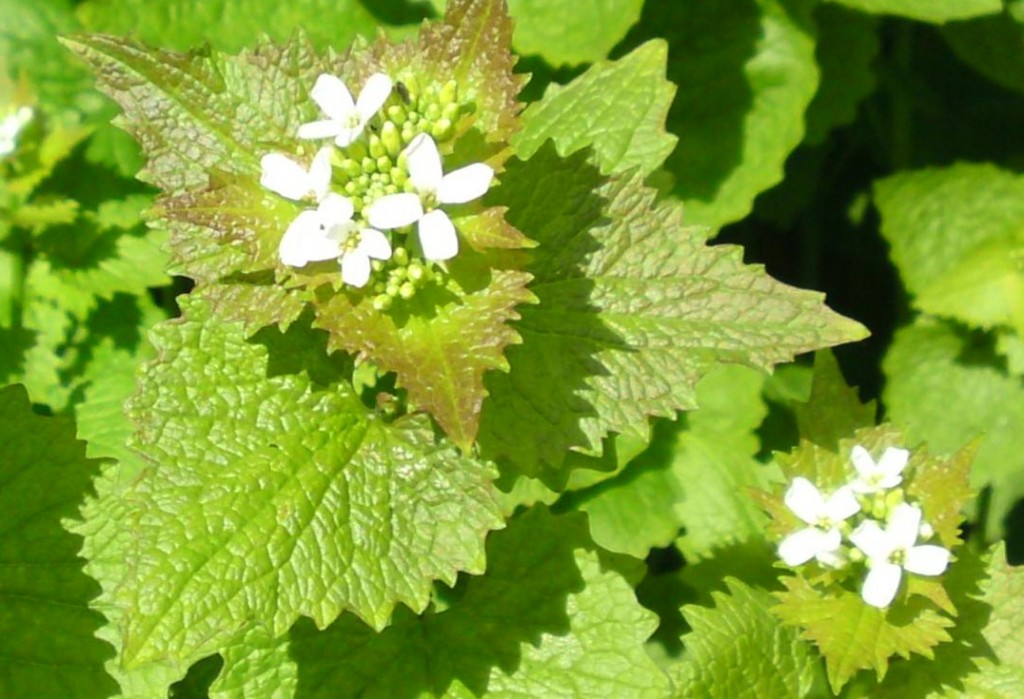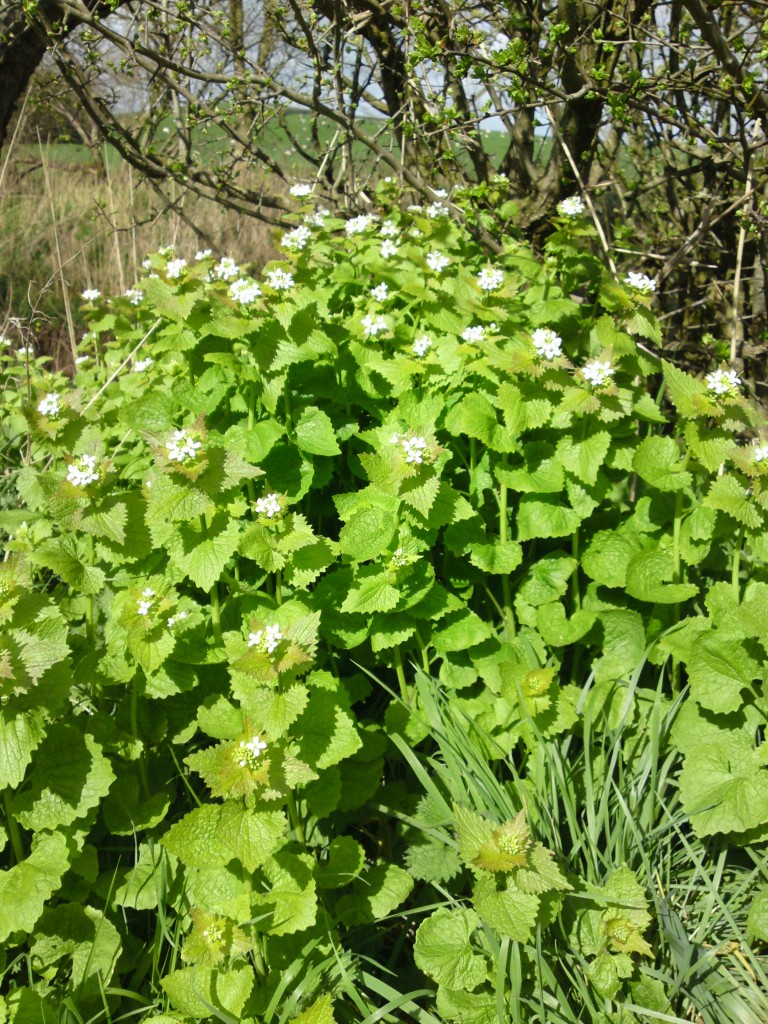Garlic Mustard – Edibility, Identification, distribution
Alliaria petiolata
AKA – Hedge Garlic, Jack by the Hedge
- Edibility – 3/5 – Pungent mustardy salad green, great for pesto, or used sparingly with milder leaves in a spring salad. Ferments well, especially if you add 10% by weight of wild garlic leaves to help it along.
- Identification – 4/5 – Basal leaves are kidney-shaped with a scalloped margin. Could be confused with lesser celandine (also edible in early spring), which is distinguished by its glossier appearance and white patches on the leaves. As spring progresses look garlic mustard’s bright green nettle-like (cauline) leaves on upright stalks (up to 1m) with disproportionately small looking 4 petalled white flowers.
- Distribution – 4/5 – Common and abundant throughout most of England, Wales and S Scotland. Considered a problematic non-native invasive in some areas of the US.
- Season – March – July (later in well shaded locations)
- Habitat – Hedgerows and wood edges
Contrary to its name, there is technically nothing in this plant that tastes of garlic – it is a member of the cabbage/mustard family. When it is rubbed (or more likely chewed) however, it undergoes a chemical reaction that makes its name quite apt. This is a cleverly evolved defence mechanism as there are few animals that like the taste of garlic or mustard. Perhaps after a few millenia of human consumption it will develop a syrup of figs flavour, but in the mean time it makes an excellent salad ingredient (in moderation), sauce for lamb or spring green.
The pungency of garlic mustard isn’t to all tastes. It took me a couple of seasons of uncertain nibbling to come round to its pungent charms. Now i’m hooked and no spring walk seems complete without its rich and vibrants flavour. It pairs very well with fatty meats like lamb.
Basal leaves are kidney-shaped (see above right), becoming more nettle-like further up the stem. They can be a bit punchy for some pallets – pick high leaves just after flowering for the best flavour. Flowers are also edible and make a very pretty garnish. The slender green seed pods are a nice addition to salads, but be sure not to mistake them for the similar looking caterpillar of the orange tipped butterfly which feast on them each spring!
Related Pages:
___________________________________________________________________________



4 Comments
A nice informative read thank you .
Lyn
“Sausages”, as the correspondents on Esther Rantzen’s “That’s Life” used to say.
There is no possible addition to a sausage sarnie that belongs in the same league as Garlic Mustard.
I love garlic mustard and I make a simple recipe with it, it’s a spread with cottage cheese and chopped garlic mustard leaves. You can add a few flowering bits to make it extra gourmet. You can check the recipe here if you’d like to: https://www.9pedia.com/9-most-delicious-edible-wild-plants/#4_Garlic_Mustard
Can actually be found all year in zone 6 as it does not die back in winter.
I have harvested and cook it in January but it is rather tough and is better used as a spice in soups and roasts.
The spring greens are much better and tender.